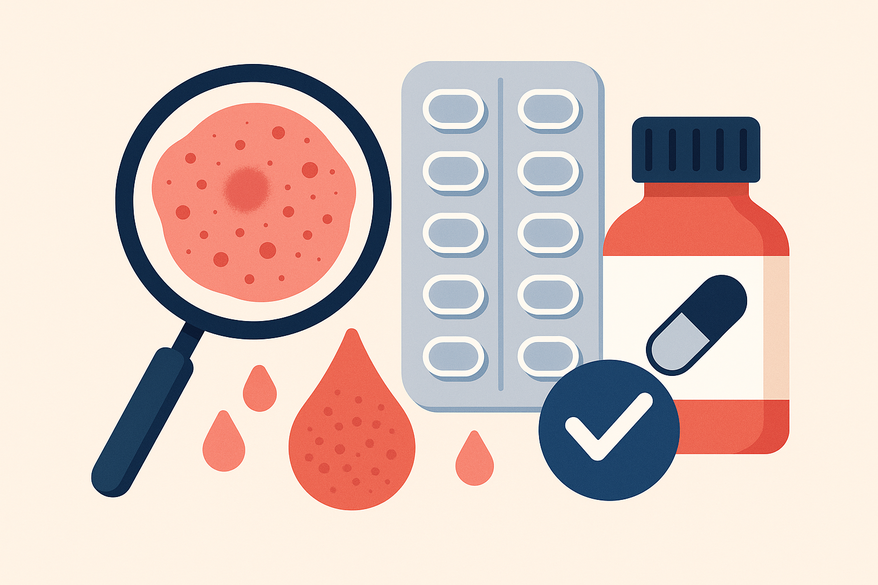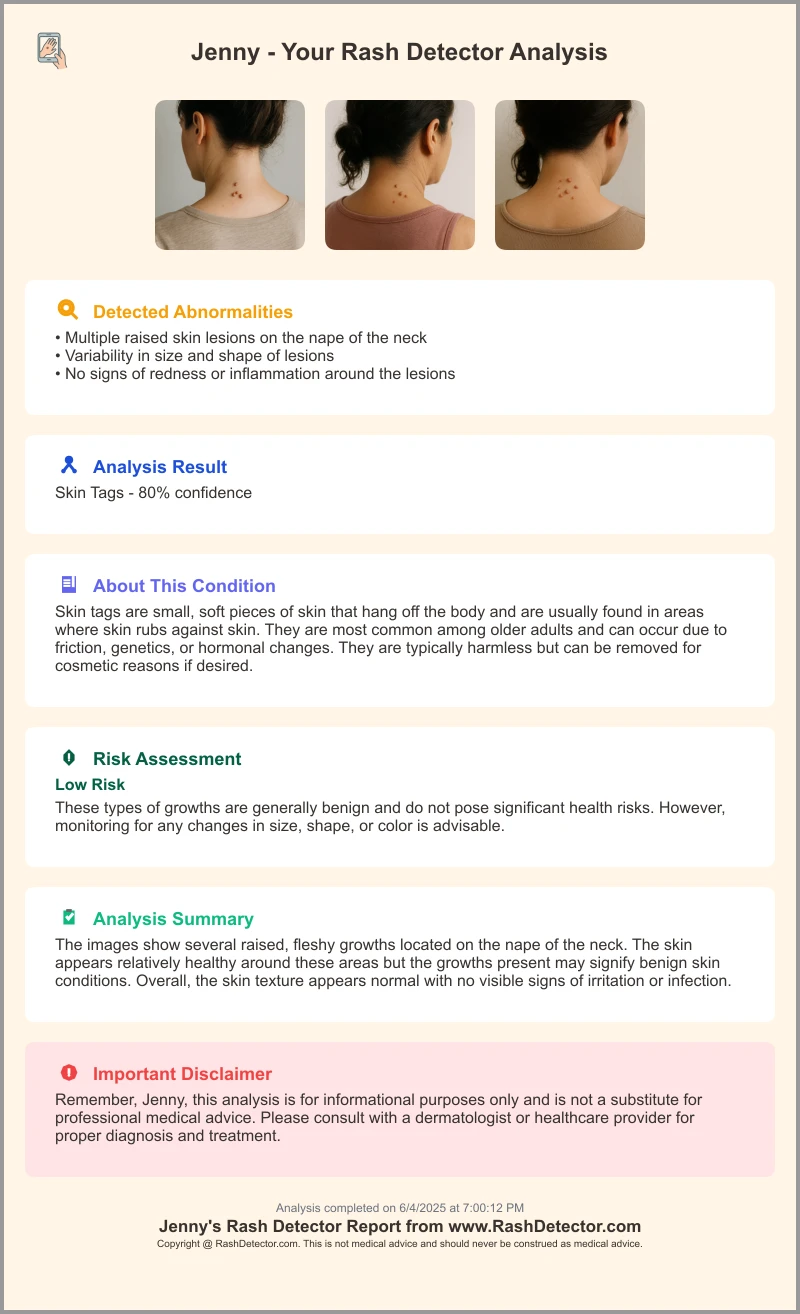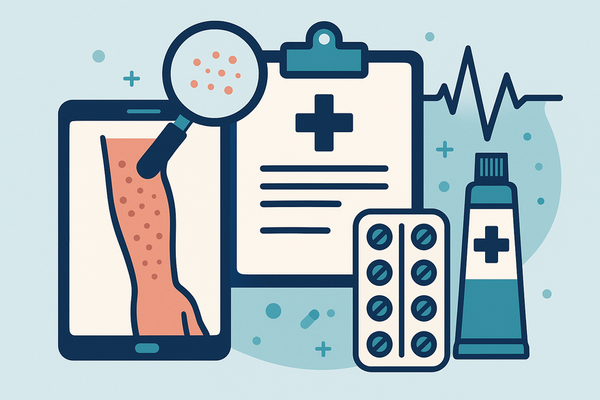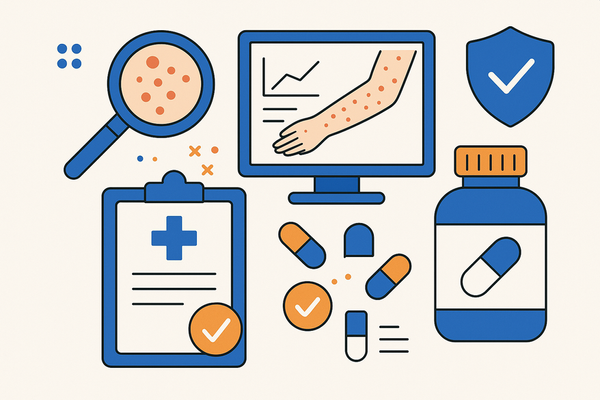Medication Rash Treatment: A Complete Guide to Identifying and Managing Drug-Induced Rashes
Discover how to identify and manage drug-induced rashes effectively. Learn about medication rash treatment strategies to prevent severe allergic reactions.

Estimated reading time: 10 minutes
Key Takeaways
- Medication rashes are cutaneous reactions to drugs that range from mild redness to life-threatening blistering.
- Common presentations include morbilliform eruptions, urticaria, fixed drug eruptions, and Stevens–Johnson syndrome/TEN.
- Early identification relies on timing, symptom tracking, and ruling out other causes.
- Treatment spans discontinuation of the culprit drug, OTC self-care, prescription therapies, and specialist referral.
- Preventive measures include thorough documentation, patient education, and cautious rechallenge.
- AI tools such as Rash Detector can support rapid, accurate rash analysis.
Table of Contents
- Introduction
- Section 1: Understanding Medication Rashes and Mechanisms
- Section 2: Identifying Medication Rashes
- Section 3: Approaches to Treatment
- Section 4: Managing and Preventing Future Rashes
- Rash Detector in Action
- Section 5: Additional Considerations
- Conclusion
- FAQ
- Additional Resources
Medication rash treatment starts with knowing what a medication rash is and why fast action matters. A medication rash is a skin reaction triggered by a specific drug, often manifesting as redness, hives, bumps, or blisters. Early recognition and prompt management can prevent escalation into severe allergic responses such as anaphylaxis or Stevens–Johnson syndrome.
Section 1: Understanding Medication Rashes and Medication Rash Treatment
Drug-induced cutaneous reactions arise through immune and non-immune mechanisms. Recognizing these pathways guides effective treatment.
Mechanisms of Drug Rashes
- IgE-mediated hypersensitivity: Drug acts as a hapten, binds to proteins, triggers IgE antibodies and histamine release.
- Non-allergic reactions: Direct cytotoxicity, T-cell mediated (Type IV delayed), and cytokine-driven inflammation.
Types of Medication-Induced Rashes
- Morbilliform eruptions: Measles-like macules/papules 1–2 weeks after starting therapy.
- Urticaria (hives): Itchy wheals minutes to days after exposure; may herald anaphylaxis.
- Fixed drug eruptions: Recurrent round, dark patches at the same site upon re-exposure.
- Stevens–Johnson syndrome/TEN: Severe blistering, mucosal involvement; requires hospitalization.
Common Signs and Symptoms: Redness, intense itching, swelling, bumps/blisters, target lesions, and peeling in severe cases.
Section 2: Identifying a Medication Rash for Medication Rash Treatment
Spotting a drug rash early is key to safe treatment. Consult the Identifying and Managing Drug-Induced Rash Symptoms guide for detailed criteria.
Key Indicators
- Onset days to weeks after starting or adjusting a medication
- Improvement upon discontinuing the suspect drug
- Absence of other obvious causes (viral, environmental)
Step-by-Step Identification Guide
- List all new or adjusted medications, including OTCs and supplements.
- Consult your prescriber before stopping any drug.
- Keep a log of:
- Rash appearance (type, color, pattern)
- Location and spread
- Onset date/time and evolution
- Systemic symptoms (fever, joint pain)
Red-Flag Signs Requiring Immediate Care
- Difficulty breathing or swallowing (anaphylaxis)
- Rapidly spreading blisters or skin peeling
- High fever, joint pain, swollen lymph nodes
Section 3: Approaches to Medication Rash Treatment
Immediate Priority: Discontinue the offending drug under medical supervision to halt immune or irritant responses. For allergic rashes, see Managing Drug Allergy Rash.
Self-Care & OTC Remedies
- Oral antihistamines: Cetirizine or diphenhydramine to reduce itch and swelling.
- Topical corticosteroids: Hydrocortisone 1% for mild cases; triamcinolone 0.1% for moderate.
- Skin soothing measures: Cool showers, fragrance-free soap, moisturizers, loose cotton clothing.
Prescription Treatments
- Oral corticosteroid taper (e.g., prednisone)
- Immunomodulators (e.g., cyclosporine) for severe syndromes
- Epinephrine autoinjector for anaphylaxis
- Burn-unit care, pain management, skin grafts for SJS/TEN
Switching Medications Safely
- Consult your provider for alternatives
- Avoid cross-reactive classes (e.g., sulfa drugs)
- Verify substitutes via allergy records and specialists
Section 4: Managing and Preventing Future Rashes with Medication Rash Treatment
Prevention Strategies: Inform every provider about past drug reactions. Start new medications at the lowest effective dose and monitor your skin closely during the first 2–4 weeks. Educate on early rash signs (redness, itching).
Documentation & Medication Diary: Maintain a diary with fields for drug name, dose, start date, rash onset and description, symptoms, interventions, and outcome. For photo logs, see Track Rash Progress Pictures.
Allergy Testing & Specialist Referrals: Skin prick or patch testing can identify specific sensitivities. Refer complex or recurrent cases to a dermatologist or allergist.
Rash Detector in Action
For personalized, AI-driven analysis of your drug-induced rash, try Rash Detector—an AI Skin Analysis App that lets you upload images of your rash for an instant, detailed sample report:

Section 5: Additional Considerations in Medication Rash Treatment
Even mild rashes can signal deeper issues. Stay alert for systemic involvement (hepatitis, nephritis), anaphylaxis risk with urticaria, or escalation to SJS/TEN if unrecognized. Early intervention and clear communication with timeline and photos are vital.
Conclusion
Prompt identification, accurate documentation, and targeted interventions are the pillars of successful medication rash treatment. By recognizing early signs, discontinuing the culprit drug under medical guidance, and applying self-care, OTC or prescription therapies, patients can prevent complications. Keep detailed records, communicate clearly with providers, and seek specialist care when needed. If you suspect a medication-induced rash, track your symptoms, contact your healthcare provider, and follow their guidance for safe and effective treatment.
Additional Resources for Medication Rash Treatment
- Merck Manual: Drug Rashes
- Cleveland Clinic: Medication Allergies
- Harvard Health: When Is a Drug Rash More Than a Rash?
- IU Health: Drug Rashes
- Becker ENT & Allergy: Managing Drug Allergy Rashes
FAQ
- Are all medication rashes true allergies?
No—many are non-immunologic or T-cell–mediated processes rather than IgE-mediated allergies. - Is stopping medication abruptly safe?
Always consult a professional—abrupt cessation can worsen your condition or cause withdrawal. - How rare is Stevens–Johnson syndrome?
It occurs in <0.1% of patients on most medications but requires immediate hospitalization. - Can I reuse a drug if my rash resolves?
No—re-exposure carries a high risk of faster, more severe reactions.





